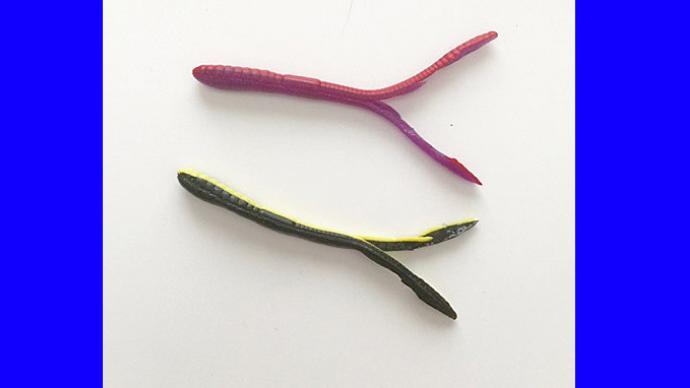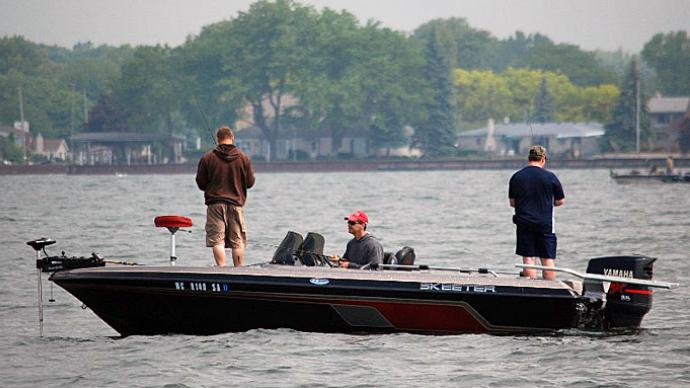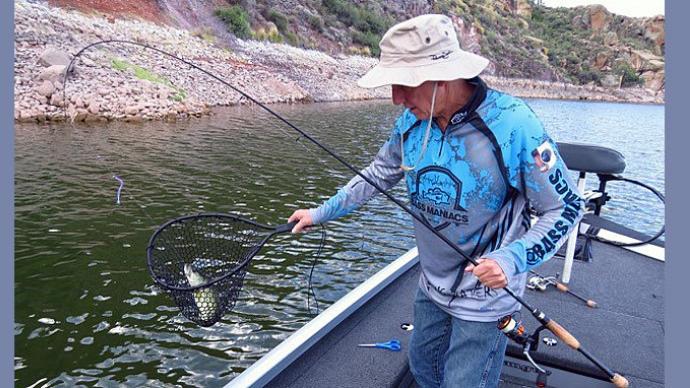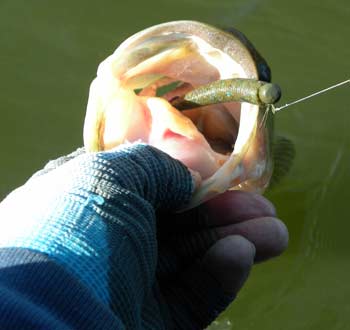
As changing conditions tighten its grip on the long bass season, there will be change on the bass horizon. Through the season, bass set up on certain structures stocked with a food source or two that the bass will focus on and rotate through. Most of how this is set up will come down to ease and availability. Bass are opportunists; if they have a food source nearby, they will do their best to stay in contact with that source and take advantage of the ease of opportunity. These food sources could be newly hatched bluegills, crappies, or baitfish in the water system. Another targeted food source could be crawfish. Together, these two food sources will make up most of the bass’ diet during the given time.
When the bass are actively feeding, getting them to bite your bait is easy, but how do you react and adjust when that bite gets tough? Let’s look at 5 finesse tactics that you should keep close in mind and at hand to help you put bass in the boat when the bite gets tough.
Ned Rig
At the top of the list and probably the most favorite finesse bass anglers use today is the Ned rig. The Ned rig is easy to rig and fish and can flat-out catch bass when given a chance. One of the things that has changed in the last few years is many of the bass companies have jumped onto the Ned bandwagon and are all producing baits in this category. Here are a few tips to take advantage of this. Ned baits come in many shapes, sizes, and new materials. Most of the Ned baits are made from traditional plastics, just like many worms we fish. These baits will have added salt in the plastic material, giving the bait a sinking action. How much salt will affect how it falls through the water column?
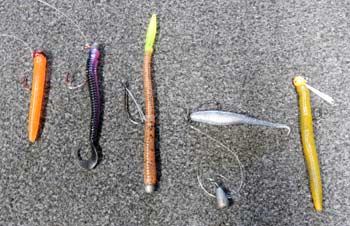
On the other hand, some companies are using newer materials. Three alternative materials are Elaztech, TPE (Thermoplastics Elastomers), and PVC Plastisol. These baits will act and present differently than traditional plastic ned baits. These materials have a floating quality, which will have a slower fall through the water column and can stand up a jig head on the bottom. This will often make it easier for the bass to eat the jig off the bottom.
One of the best advice I can give you is to stock multiple Ned baits in different materials and use this to your advantage. Fish assorted brands against each other and see what the bass want that day. Also, stock different ned jig heads in your box and use one against the other. I have had days when this won’t make an impact, but you have to use the favored jig head or plastics to trigger bites on other days. Keep your ned options wide open.
Jig Worms
Jig worms were the early predecessor to the ned bait. In Minnesota, we would use a 1/16oz to 1/8oz mushroom jig head teamed with a 4" ringworm; this was the chosen presentation when the bite got super tough to many of us tournament anglers before this presentation was even called finesse fishing. The main setup we used at the time was a 6'6" spinning rod teamed with a C3 Abu Garcia spinning reel spooled with 6lb to 8lb mono line. That was the top-of-the-line spinning setup in its day.
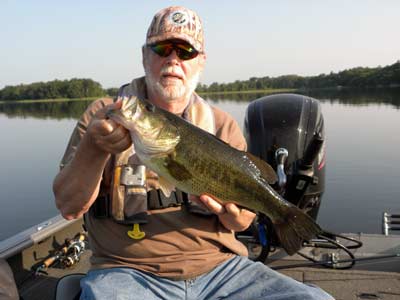
Today, 4" worms come in many shapes and actions. Also, use alternate material worms to your advantage. Just like the Ned worms, these alternate material worms will act and fish differently than the characteristics of traditional plastic worms. The top two rigging for 4” worms are jig heads, and I will also throw a Texas rigged worm into this mix. Most of this will depend on where you are, fishing your presentation. I will use a jig head rigged worm to target a weed edge or rocks. But if I’m up in the weeds, I’ll use a Texas-rigged worm for my presentation of choice.
I will include not only 3" and 4" worms but also 4” stickbaits (Senko’s) in this category. A stickbait is now my top bait in this category, along with a 4" ringworm.
Drop Shot
Aaron Martens put the drop shot on the finesse map and made many of the finesse improvements that we call finesse fishing today. He was instrumental in taking braid and using this as his finesse line of choice. This was the big thing that changed how we all finesse fish today and has expanded the boundaries of finesse fishing going forward. No longer was there a chance of breaking bigger bass off with the lines we were first using when finesse fishing. Twenty years ago, monofilament was the line of choice. Fluorocarbon was the following line choice in this category. It was an improvement over mono because it had less stretch, giving you a better feel and a better hook set, but it still was not braid. Braid has given us added sensitivity over fluorocarbon and more strength with limited stretch in a smaller line size. It is these characteristics that have made finesse fishing the powerhouse that it is today. Drop-shot fishing was the first finesse category that really became evident, and you have Aaron to thank for that.
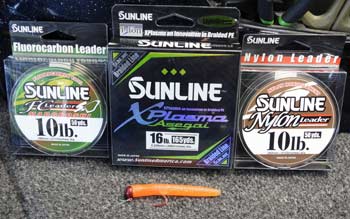
Aaron spooled his drop shot reel with 10lb braid and teamed it with a fluorocarbon leader. He quickly learned that he got better hook sets and could feel the slightest bites in the process. He also decreased his lost fish with fewer breakoffs overall.
Fast-forward to today. Over the years, line twist has been a problem when drop-shot fishing. Many fishermen added a small swivel to help eliminate this problem between their main line and leader. That was until Gamakatsu produced the first drop-shot hook that rotated around a wire called a Swivel Shot. This was the answer to the drop-shot line twist dilemma.
Today, there are more drop shot bait options to choose from, keep a few different ones in your finesse box. Many of the choices you use in your worm fishing can also be used in drop-shot fishing; add flukes and minnow baits to this category.
Neko Rig
The Neko rig is an offspring of the wacky rig worm. It came onto the bass scene about ten years ago. Anglers were looking for diverse ways to rig worms and Senkos to expand their fishing choices.
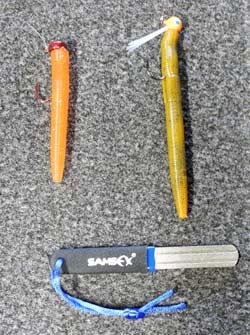
There are a few diverse ways to rig a Neko rig. First, grab the bait that you would like to rig. I always use an O-ring or a VMC collar on my worm or stickbait. This will cut down on loss baits in the process. Ensure you rig your hook under this collar; if you use a VMC collar, you have hook tabs that will hold your hook for either a Neko rigging or a wacky rigging. When rigging your hook, the key is to position the hook point facing up. As you work your bait through the cover, the hook shank will function as a weed guard. If you rig your hook point down, you’ll pull it into the cover, fouling your bait more than getting it through the cover clean.
When talking about weights, if I’m fishing my Neko on the rocks, I will use a tungsten weight rigged in the nose of the bait exposed. This gives a better feel of what the bait is doing than a weight buried inside the nose, which does not make contact with the rocks. If I’m fishing my Neko in the weeds, I’ll use a lead nail weight inside the nose of my bait. To ensure the nail stays in the bait, I’ll add a drop of super glue when inserting it into the bait.
One key to note is where you place your hook collar on the bait. If you get the collar higher than the middle of the bait on a slack line, your bait will fall backward on a slack line. This will often create a strike from the following bass as the bait falls backward, hitting them and creating a reaction bite. If you place your ring halfway down, the bait will have more of a vertical fall to the bottom and stand up on the bottom. Match your rigging to the conditions in which you’re fishing.
Shaky Head Jig
Looking at all the categories that we have listed here, the shaky head jig is the one that I list as the sleeper of the finesse group. This is because many anglers have taken a shaky head off their list as a go-to bait for finesse fishing today. In many cases, the shaky head today has been replaced by the Ned rig. That has made my shaky head fishing more successful daily, as the bass sees less of a shaky head presentation.
When it comes to jig heads that I use, I’m a fan of a football shaky head jig. This jig will give your bait more action as you crawl it across the bottom and keep your hook in a better position when setting it. If you use a ball head jig, it can fall on its side, costing you hooked bass in the long run. With a football head, the hook point always points up when sitting on the bottom. This creates a better hook set when the bass takes your bait.
The key to shaky head fishing today is to expand the baits you’re using. I still use a worm as one of my bait choices, but I have also included craws, tubes, and flukes into my shaky head bait rotation mix. Give the bass a few different looks when it comes to your bait choices. Throwing a shaky head today and expanding my bait options has resulted in more bass over the side of the boat when given a chance.
Finesse Setups
Regarding rods and reels, I’ll let you choose the combo you want to use. Most finesse fishing today is done with a 7ft medium action spinning rod matched with a 200 to 300 size spinning reel spooled with 10lb to 15lb braided line. My choice of braid is Sunline Asegai braid, and I use 16lb as my primary line choice. When it comes to a leader, my first choice is Sunline 10 FC leader. When faced with days when the bass are fussy, I’ll change to Sunline 8 to 10lb monofilament leader. This adds more stretch to my line and gives me a better chance to get a hook set before the bass can feel me.
As a backup, I always carry a 7ft spinning setup spooled with straight Sunline 10lb Assassin FC. There have been more days than I can count when this has been my fallback setup on those days when the bass drop the bait before you can set a hook into them when using braid.
This will help you improve using a few different finesse setups in your bass fishing. With more anglers on the water today and better waterways management across the US, finesse fishing is becoming a significant player in our daily fishing. Can I go out and power fish my way through tough bites? Yes, many times I can, but I have been more successful on the days I don’t fight the finesse bite; I join in, get out a spinning rod and reel, and give the bass what they are looking for.


